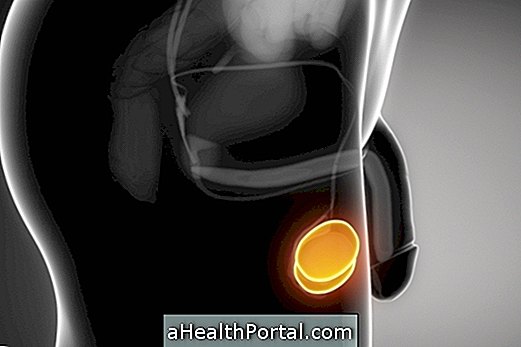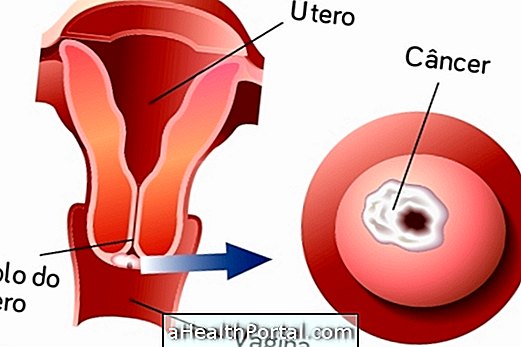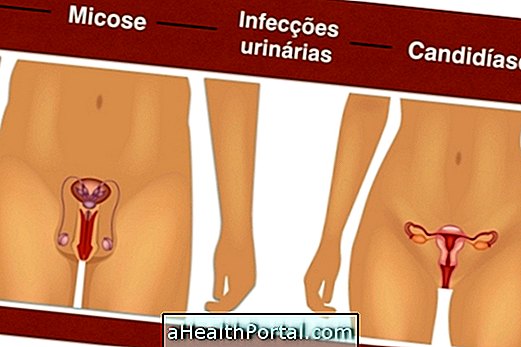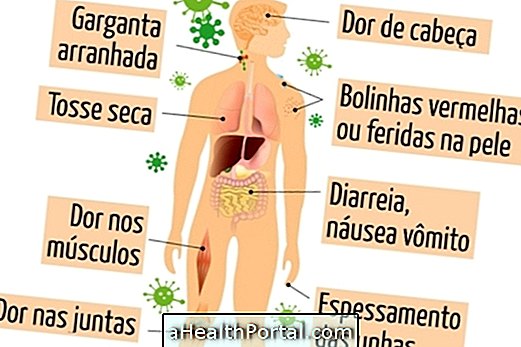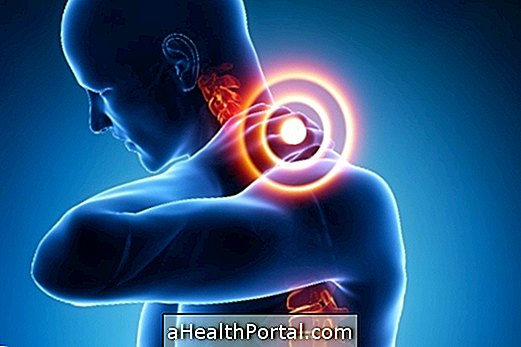The first symptom of syphilis is a wound that does not bleed and does not hurt, which arises after direct contact with another person's syphilis wound. This wound may take 3 to 12 weeks to appear and when rubbed it releases a clear liquid.
This wound tends to disappear on its own without any treatment, but this does not represent that the disease has healed but is advancing to the second stage of syphilis. Here's how to treat and cure this disease.
Syphilis can manifest itself in four different ways: primary, secondary, tertiary and congenital, which occurs when a pregnant woman has syphilis and does not perform the treatment, passing the disease on to the baby. Each form of syphilis has its characteristics:
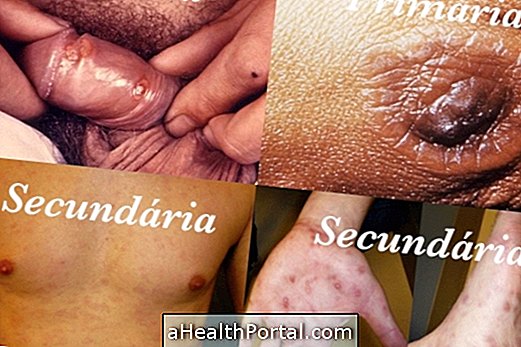
1. Primary syphilis
Primary syphilis is the early stage of the disease, which appears about 3 weeks after infection. This stage is characterized by the appearance of hard cancer, small red lesions in the genital organs that end up disappearing after 4 or 5 weeks without leaving scars.
In men, these wounds usually appear around the foreskin, while in women they appear on the small lips and vaginal wall. It is also common the appearance of this wound in the anus, mouth, tongue, breasts and fingers. In this period, there may also be navels in the groin or near the affected region.
Secondary syphilis
After the disappearance of hard cancer lesions, which is a period of inactivity can last from six to eight weeks, the disease will again come into activity. This time, the compromise will occur on the skin and internal organs, as the bacteria spread throughout the body.
The new lesions are characterized as pink spots or small brownish-colored lump that appear on the skin, mouth, nose, palms and soles of the feet, and sometimes there may be intense peeling of the skin. Other symptoms that may arise are:
- Red spots on the skin, on the mouth, on the nose, on the palms of the hands and on the soles of the feet;
- Desquamation of the skin;
- Languages throughout the body, but mainly in the genital region;
- Headache;
- Muscle pain;
- Sore throat;
- Malaise;
- Mild fever, usually below 38 ° C;
- Lack of appetite;
- Weight loss.
This phase continues during the first two years of the disease, and arises in the form of outbreaks that regress spontaneously, but which are becoming more and more enduring.
3. Tertiary syphilis
Tertiary syphilis occurs in people who have not been able to spontaneously fight the disease in their secondary stage or who have not had proper treatment. At this stage, syphilis is characterized by:
- Greater lesions on the skin, mouth and nose;
- Problems in internal organs: heart, nerves, bones, muscles, liver and blood vessels;
- Constant headache;
- Frequent nausea and vomiting;
- Rigidity of the neck, with difficulty to move the head;
- Convulsions;
- Hearing Loss;
- Vertigo, insomnia and stroke;
- Exaggerated reflexes and dilated pupils;
- Delusions, hallucinations, a decrease in recent memory, ability to orient, to perform simple mathematical calculations, and to speak when there is general paresis.
These symptoms usually arise after 10 to 30 years of initial infection, and when the individual is not treated. Therefore, to avoid complications in other organs of the body, treatment should be done soon after the onset of the first syphilis symptoms.
Symptoms of congenital syphilis
Congenital syphilis is when the baby is infected with syphilis even during gestation, and this happens when the pregnant woman has syphilis and does not treat the disease.
Syphilis during pregnancy can cause miscarriage, malformations or death of the baby at birth. In live babies, symptoms may appear from the first weeks of life to more than 2 years after birth, and include:
- Pale red or pinkish round spots on the skin, including the palms of the hands and the soles of the feet;
- Easy irritability;
- Loss of appetite and energy to play;
- Pneumonia;
- Anemia
- Problems in bones and teeth;
- Loss of hearing;
- Mental disability.
Treatment for congenital syphilis is usually done with 2 injections of penicillin for 10 days or 2 injections of penicillin for 14 days, depending on the age of the child.
Does syphilis have a cure?
Syphilis has a cure and can be easily treated with penicillin injections, but its treatment should be started as soon as possible to prevent the emergence of serious complications in other organs such as the brain, heart and eyes, for example.
How to diagnose syphilis
To confirm that it is a syphilis, the doctor must observe the person's inner region and investigate whether the person has had intimate contact without a condom. If there is no genital area wound or other parts of the cup the doctor may request an examination called VDRL that identifies Treponema pallidum in the body. Learn all about the VDRL exam.
This test is usually performed every trimester of gestation in all pregnant women because syphilis is a serious illness that the mother can pass on to the baby but is easily cured with antibiotics prescribed by the doctor.
